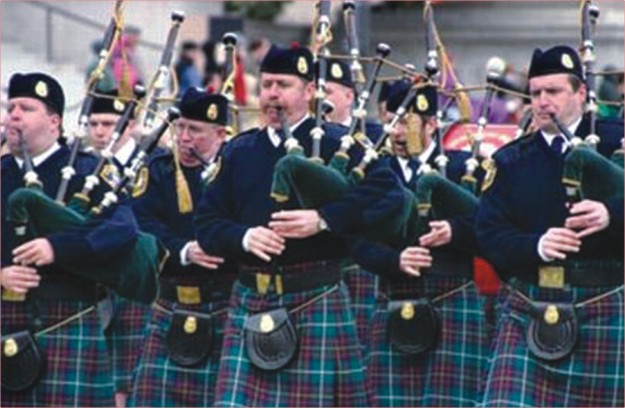Sounds and Rhythm
Bagpipes
Nazia Ahmed
 Bagpipes are the lost connection between noise and music, as Jim Davis said. Bagpipes are the lost connection between noise and music, as Jim Davis said.
Its origins can be traced back to the most ancient civilizations. The bagpipe probably originated as a rustic instrument in many cultures because a herdsman had the necessary materials at hand: a goat or sheep skin and a reed pipe. Historians believe that it originated in Sumaria. Through Celtic migration it was introduced to Persia and India, and subsequently to Greece and Rome. In fact, a Roman historian of the first century wrote that the Emporer Nero knew how to play the pipe with his mouth and the bag thrust under his arm.
Bagpipes have been played throughout Europe from before the Norman Conquest until the present day.
The construction of the bagpipe allows a continuous supply of air to be maintained. By squeezing the bag with his left hand while a breath is taken, the flow of air can be kept up in both the drone pipes and chanter. Other features of this instrument are the mouth pipe and the double reed of the chanter and drone. The mouth pipe contains a round piece of leather hinged onto the bag end which acts as a one way valve. As the player blows air in, the flap opens; when he stops blowing the air pressure within the bag forces the flap shut. The chanter has seven finger holes and a thumb hole, and has a usual range of an octave and one note.
Ideal for solo dances and monophonic music, the bagpipe is mentioned for use in polyphony. The ancient people liked the idea of a continuous sound, which the air bag enabled to accomplish.
Its loud volume is a function of its developed as an outdoor instrument for use in battles.

Sources: Internet
| 